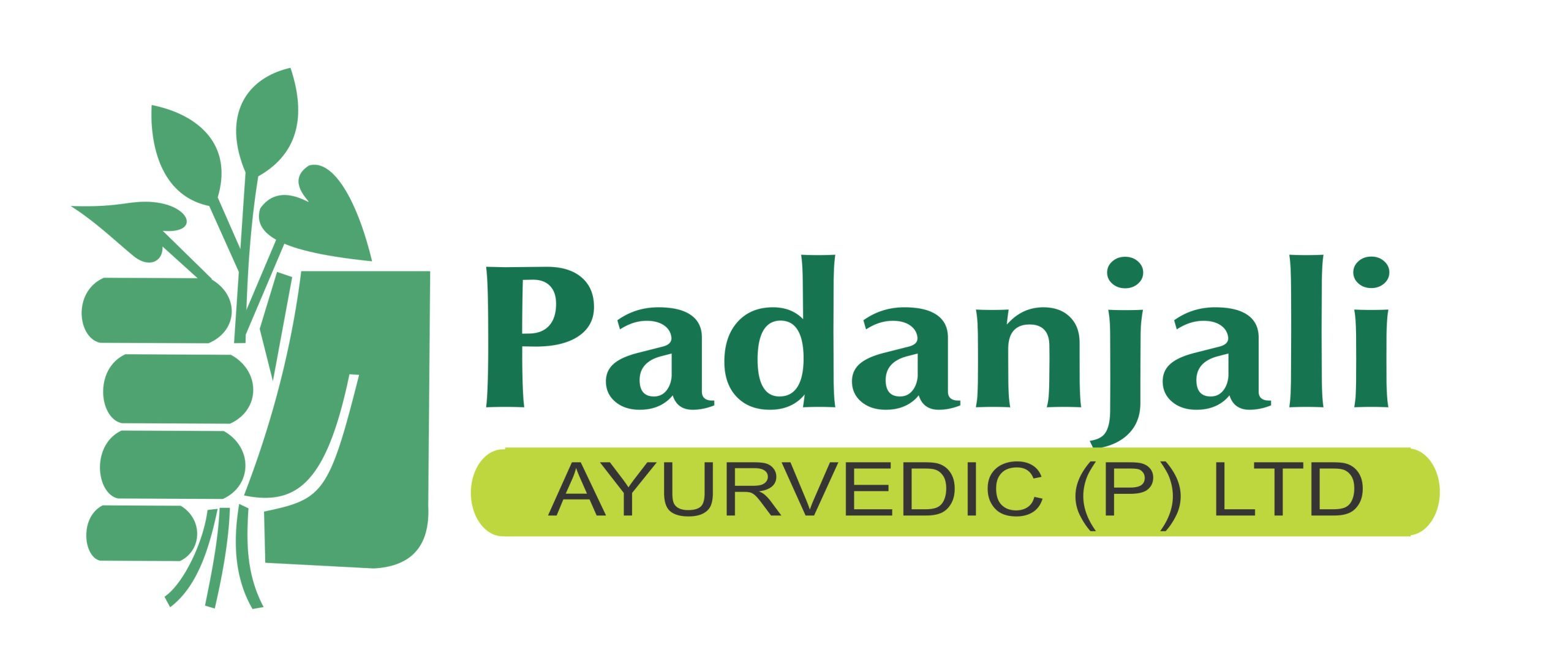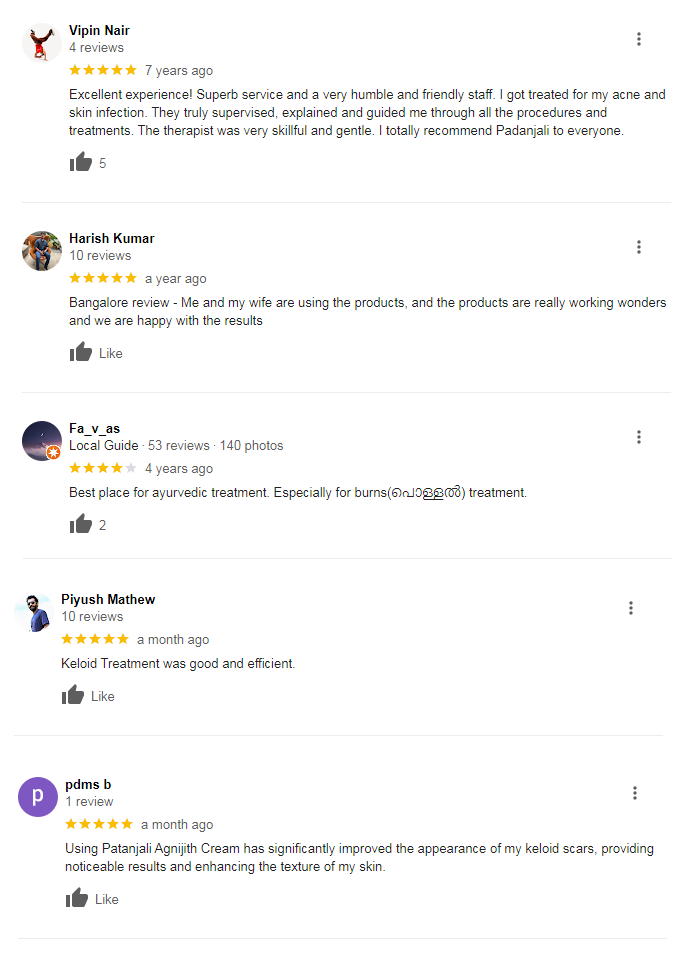Keloid Treatment in Ayurveda
Keloid scars can be a distressing skin condition for many, leading to physical discomfort and emotional stress. Ayurveda, with its holistic and natural approach, offers effective treatments for keloids. This comprehensive guide provides detailed information about keloids, their types, symptoms, causes, and Ayurvedic treatment methods

What is a Keloid?
Keloids are a type of raised scar that grows excessively, extending beyond the original boundaries of a skin injury. Unlike typical scars that heal and fade over time, keloids continue to grow and can become quite large. They often appear shiny and have a smooth top. Keloids are not harmful, but they can be itchy, painful, and cosmetically unappealing.
What are the Different Types of Keloids?
Keloids can vary in their appearance and severity. The primary types include:
- Minor Keloids: Small and less raised, these keloids are usually less noticeable and cause minimal discomfort.
- Major Keloids: Larger, more pronounced, and often accompanied by significant itching and pain. These keloids can affect the individual’s quality of life more severely.
- Hypertrophic Scars: While not true keloids, hypertrophic scars are similar in appearance. They are raised and red but do not extend beyond the boundaries of the original wound.
Signs and Symptoms of Keloids
Keloids present several distinctive signs and symptoms, which can help in their identification:
- Raised and Lumpy Texture: Keloids are typically raised above the skin’s surface and may feel hard and lumpy.
- Color Changes: They can be pink, red, flesh-colored, or even darker than the surrounding skin.
- Itchiness and Discomfort: Keloids often cause itching and discomfort. In some cases, they may be painful, especially when they continue to grow.
- Size and Shape: Keloids vary in size and shape, often growing irregularly beyond the original wound’s borders.
- Delayed Appearance: Keloids can develop weeks or even months after the initial injury, sometimes long after the wound has healed.
Causes of Keloids
Understanding the causes of keloids is essential for effective prevention and treatment. The primary causes include:
- Genetic Predisposition: Keloids often run in families, indicating a genetic component to their development.
- Skin Injuries: Any skin injury can lead to keloid formation, including cuts, burns, surgical incisions, and piercings.
- Inflammatory Skin Conditions: Acne, chickenpox, and other skin conditions that cause inflammation can result in keloid scars.
- Skin Tension: Areas of the skin under high tension, such as the chest, shoulders, and back, are more prone to developing keloids.
- Ethnicity: Keloids are more common in people with darker skin tones, such as African, Hispanic, and Asian individuals.
Ayurvedic Perspective on Keloid Treatment
Ayurveda, the traditional system of medicine in India, offers a unique approach to treating keloids. This ancient science emphasizes balance in the body and mind, using natural remedies to promote healing and restore health.


Agnijith – Keloid Removal Cream
Agnijith, an alternative ayurvedic medicine for the treatment of keloids, cures keloids naturally. In worst cases keloids usually break and blood and puss come out. This curative herbal medicine is highly effective to heal the wound, remove the dead cells and stop puss and blood.
Agnijith, a specially formulated herbal cream developed by Padanjali Ayurvedics, plays a key role in our keloid management approach. Here’s how Agnijith can benefit you:
- Anti-inflammatory Properties: Helps reduce redness, swelling, and discomfort associated with keloids.
- Supports Healing: Encourages skin cell regeneration and promotes a healthy skin barrier.
- Manages Itching: Provides relief from the persistent itching that can significantly affect your quality of life.
Application of Agnijith
To achieve the best results with Agnijith, follow these application steps:
- Apply a thick layer of Agnijith on the keloid and leave it on the skin for 2 hours.
- In the case of open wound keloids, apply a thick layer of Agnijith every 2 hours.
- Wash keloids with mild soap, and rinse wounds with sterilized cotton.
- Store the cream in a cool place and apply it only at room temperature.
In Vitro Study Report
In Vitro Study Report conducted by department of bio technology University of Kerala, India supports the efficacy of Agnijith. The study highlights the cream’s potent healing properties and its ability to restore skin health effectively.
Consultation and Treatment Plan
For personalized treatment, it is essential to consult with an Ayurvedic doctor. The doctor will evaluate the severity of the keloid and recommend a treatment plan tailored to the individual’s needs. Consultations can be done via phone or the internet, making it accessible for patients worldwide.
Contact Information: Reach out to our Ayurvedic experts by phone or send detailed information about your skin condition along with photographs of the affected area. This will help our doctors provide accurate advice and treatment plans.
Prevention Tips for Keloids
Preventing keloids is easier than treating them. Here are some tips to reduce the risk of keloid formation:
- Avoid Unnecessary Skin Trauma: Minimize activities that can cause skin injuries, such as body piercings or tattoos.
- Proper Wound Care: Take good care of any skin injury. Clean wounds thoroughly, apply appropriate ointments, and cover them to prevent infection.
- Use Silicone Sheets: Silicone sheets or gels can be applied to the wound site to reduce the risk of keloid formation.
- Avoid Tension on Wounds: Keep wounds in areas with minimal skin tension to prevent excessive stretching and keloid development.
- Early Treatment: Treat any signs of keloid formation early to prevent them from growing larger.
Conclusion
Keloids can be a challenging skin condition, but with the right approach, they can be managed effectively. Ayurveda offers natural and holistic treatments that address the root causes of keloid formation, providing lasting relief. By combining herbal remedies, lifestyle changes, and specialized treatments like Agnijith, Ayurveda presents a comprehensive solution to keloid scars. For personalized advice and treatment, consulting with an Ayurvedic expert is recommended. Embrace the healing power of Ayurveda and take a step towards healthier, scar-free skin.
FAQ
1. Which Ayurvedic medicine is best for scars?
Agnijith is highly recommended for treating keloid scars in Ayurveda. It is an effective Ayurvedic cream known for its anti-microbial properties, which help heal wounds, remove dead cells, and promote the regeneration of healthy skin tissue.
2. What is the best natural treatment for keloids?
The best natural treatment for keloids includes using herbal remedies like Agnijith cream, applying herbal pastes, maintaining a balanced diet rich in anti-inflammatory foods, staying hydrated, and practicing regular exercise. Ayurveda also recommends Panchakarma therapy for detoxification and improving skin health.
3. What is the fastest way to heal a keloid?
The fastest way to heal a keloid is to start treatment early. Using Agnijith cream can significantly speed up the healing process due to its strong anti-microbial properties and ability to enhance blood circulation at the capillary level. Regular application, combined with proper wound care and a balanced diet, can expedite recovery.
4. Can keloid be cured by Ayurveda?
Can keloid be cured by Ayurveda?Yes, Ayurveda offers effective treatments for keloids. Ayurvedic remedies such as Agnijith cream, herbal pastes, dietary changes, and detoxification therapies like Panchakarma can help manage and reduce keloid scars. While complete cure depends on individual cases, many patients experience significant improvement and relief through Ayurvedic treatment.
5. How do I apply Agnijith cream for keloid treatment?
To apply Agnijith cream, follow these steps:
Store the cream in a cool place and use it at room temperature.
Apply a thick layer of Agnijith on the keloid and leave it on for 2 hours.
In the case of open wound keloids, reapply every 2 hours.
Wash the keloid with mild soap and rinse with sterilized cotton if there is an open wound.
6. What causes keloids to form?
Keloids can form due to several factors, including genetic predisposition, skin injuries (cuts, burns, surgical incisions, piercings), inflammatory skin conditions (acne, chickenpox), and skin tension. Keloids are more common in people with darker skin tones.
7. Are there any preventive measures for keloids?
Yes, preventive measures for keloids include avoiding unnecessary skin trauma, proper wound care, using silicone sheets or gels on wounds, minimizing tension on wounds, and treating any signs of keloid formation early.
8. What are the signs and symptoms of keloids?
Signs and symptoms of keloids include raised and lumpy texture, color changes (pink, red, flesh-colored, or darker than surrounding skin), itching, discomfort, irregular growth beyond the original wound, and delayed appearance weeks or months after the initial injury.
9. How does Ayurveda treat keloids?
Ayurveda treats keloids using a holistic approach that includes herbal remedies, topical applications like Agnijith, dietary and lifestyle changes, and detoxification therapies such as Panchakarma. These treatments help reduce inflammation, promote skin regeneration, and prevent the growth of keloid tissue.
10. How can I consult with an Ayurvedic doctor for keloid treatment?
You can consult with an Ayurvedic doctor via phone or the internet. Provide detailed information about your skin condition along with photographs of the affected area to help the doctor recommend an appropriate treatment plan. Contact information for consultations is usually provided by the Ayurvedic treatment center.
11. What is Agnijith and how does it work?
Agnijith is an Ayurvedic cream designed for keloid treatment. It works by leveraging its anti-microbial properties to heal wounds, remove dead cells, and improve blood circulation at the capillary level, which helps in the regeneration of healthy skin tissue.
12. Can diet and lifestyle changes help in the treatment of keloids?
Yes, diet and lifestyle changes play a crucial role in the Ayurvedic treatment of keloids. A diet rich in anti-inflammatory foods, staying hydrated, regular exercise, and avoiding foods that can cause inflammation can support the healing process and prevent the formation of new keloids.
14. How long does it take for Ayurvedic treatment to show results for keloids?
The duration for Ayurvedic treatment to show results can vary depending on the severity and size of the keloid. Generally, patients may start noticing improvements within a few weeks of consistent treatment, but complete healing may take several months.
15. Is there any scientific evidence supporting Ayurvedic treatments for keloids?
Yes, there is scientific evidence supporting Ayurvedic treatments for keloids. An in vitro study conducted by the Department of Biotechnology at the University of Kerala, India, highlighted the efficacy of Agnijith cream in promoting healing and restoring skin health effectively.






